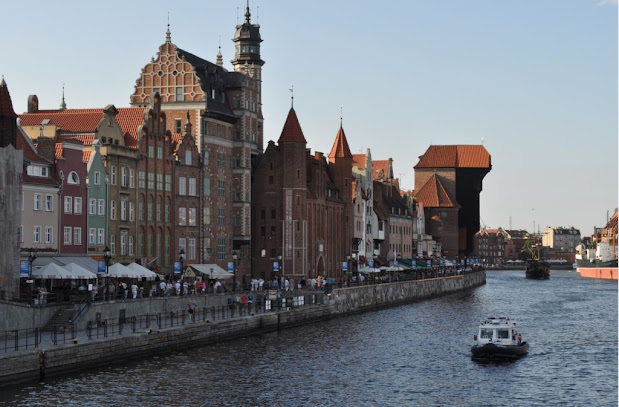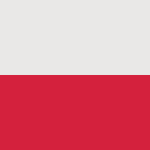Three-City Introduction
Gdansk, Gdynia and Sopot
Tri-City, Tricity – or in Polish ”Trojmiasto” – consists of three Polish towns on the Gdansk Bay, characterized by a close cooperation between the towns and a common infrastructure. Housing 750,000 inhabitants, the agglomeration is one of the largest joint urban areas in Poland, and including the surrounding areas and towns the agglomeration reaches 1.1 million people, which forms a power centre with direct access to the Baltic Sea – a power centre which may not have exploited its entire potential yet.

The water line i Old Town Gdansk
However, what is special about Tri-City is the huge variations in architecture, mentality and even language between different parts of the agglomeration. Gdansk is the oldest of the three towns – actually one of the oldest Polish towns –with a history going back more than a thousand years. The town was razed to the ground during WWII, but was re-erected after the war with respect for the historical traditions. The harbour front resembles the channels of Copenhagen, Stockholm or Amsterdam, and the large main street – Dlugi Targ – maintains a ban on motor traffic and is filled up with activity and people. The area between the harbour front and Dlugi Targ is packed with alleys and passageways broken by occasional architectonical masterpieces, such as e.g. the Maryacki Church, the Opera and the Post Office, which forms the framework of essential parts of the novel The Tin Drum written by the German Nobel laurate Gunter Grass.
East of the city centre we find the harbour area Westerplatte, where the Germans started off WWII with an attack on Polish troops.
Slightly north of the city centre stands the shipyard, which in the seventies and the eighties formed the framework of the unrest which would later lead to a change in the political system in Eastern Europe, under the leadership of the electrician Lech Walesa, and as a consequence, reorientation of the political situation all over the world. Further ahead we see other neighbourhood-centres with a completely different character than the centre of the Old Town. North of the medieval centre we find Wrzeszcz with the Technological University and parts of the university, further on Oliwa with residential areas, old villas, parks and Poland’s largest zoo, which rather resembles a wildlife park.
From anywhere in the central parts of the town, north of the suburban railway, there are only a few kilometres to well developed beach areas with small restaurants, housing and residential areas as well as camping sites.
Gdansk has grown together with Sopot – an old German holiday town housing part of the University of Gdansk, a forest opera, an extraordinarily long wooden pier and also some of the hottest atmosphere in Northern Europe. Because of the University things are happening all year round, but in the summer period especially the town is besieged by happy holiday visitors from all over Poland and even more guests from other European countries. Hundreds of bars, pubs, clubs and excellent restaurants cater for the guests and the 35,000 residents. You may find accommodation in any price range from elegant five star holiday hotels by the seaside to modern hotel chains and pensions to private rooms in villas and cheap camping sites.
At the very north end of Tri-City lies Gdynia – a modern trade centre with a fish market, container port, marina and office palaces in glass and steel. The shop windows leave an impression of quick turnovers of luxury goods, and in general one may find oneself in another world, arriving from Gdansk or Sopot – a place where money is not only something you spend, but also something you have to make, and preferably it shouldn’t be moving to slow with the money making.
The entire area is bound together by the commuter rail, running non-stop and quite frequently during the day and early evening hours. Furthermore, the agglomeration has a fast ring road, a good network of local roads, efficient tram connections and loads of bicycle paths. An excellent international airport ensures connections to London, Edinburgh, Malmo, Copenhagen and other German and European airports. You may also take the ferry to Sweden or Finland.
From Gdansk, as well as Sopot and Gdynia, there is a ferry connection to the Hel peninsula, which is mainly inhabited by Kashubians – an old Pomeranian people with its own language and traditions. Historically, Hel mainly consisted of fishing hamlets and navy units, but in the summer time it is now a holiday area with a unique atmosphere and a more relaxed way of life than in Sopot. Further down the peninsula you will find loads of small pensions, specializing in lazy family holidays. You may also get to Hel by car or by train.
Please send an email to m@hardenfelt.pl if you would like an English-speaking tour guide to show you the most important places in Warsaw.
